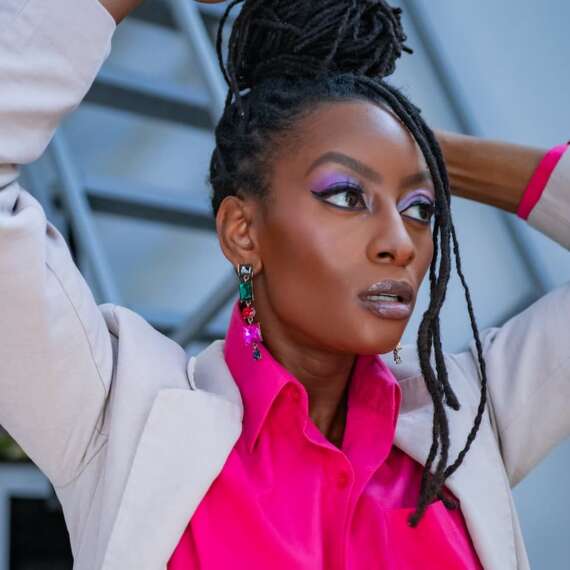Fashion once claimed to celebrate individuality, yet it thrived on labels—gendered racks, cultural boxes, and silhouettes that told you who to be before you decided for yourself. But those borders are dissolving. In the post-label era, the goal isn’t to categorize—it’s to create clothing that becomes a language of self-definition. Design has evolved from dictating identity to enabling it, and that shift is rewriting the rules of what fashion means.
The rise of gender-fluid design was the first major signal. What began as a statement has become a standard. According to The Business of Fashion, unisex and gender-neutral collections now represent nearly 17% of global fashion output, with projections expecting that number to double by 2030. But the movement isn’t about neutrality; it’s about range. The best designers aren’t erasing difference—they’re expanding it. Thom Browne builds suits that fit any frame but carry the same structure. Harris Reed sculpts garments that exist between masculine and feminine without apology. These designers aren’t asking who you are—they’re giving you tools to say it yourself.
You can feel this evolution in how collections are conceived. For a generation raised online, identity is fluid by default. People move between digital and physical selves daily, changing tone, presentation, and community with each context. In that world, fashion can no longer afford to be static. It must adapt as quickly as the identities it serves. Brands like Collina Strada, Telfar, and Eckhaus Latta have made that adaptability a foundation. Their garments are less about fitting in and more about fitting out—giving you the freedom to inhabit multiple versions of yourself at once.

The commercial logic behind this is as strong as the cultural one. Inclusivity isn’t a PR campaign—it’s a business model. McKinsey’s 2025 Fashion Report found that brands adopting fluid design principles see, on average, a 25% increase in customer retention and a 32% rise in repeat purchase behavior. When people feel represented, they stay loyal. The future of fashion’s growth lies not in segmenting consumers, but in empowering them. The era of mass personalization isn’t about infinite options; it’s about intentional freedom.
Customization is where that freedom meets practicality. As technology advances, co-creation is becoming standard practice. AI-enabled design tools now allow customers to alter cuts, colors, and textures before garments are produced, reducing waste while deepening attachment. Adidas’s “Made for Me” and Levi’s Future Finish are early examples of how individual preference can merge with scalable production. But smaller studios are leading the real innovation—using digital pattern systems that let wearers shape how clothing drapes, moves, and reflects light on their own terms. Identity, in this context, becomes a collaboration between designer and wearer.
Still, designing for a post-label world takes more than software—it takes sensitivity. Cultural identity, like gender, is being renegotiated. Younger consumers are redefining heritage not as purity, but as connection. A jacket woven in Mexico City and styled in Seoul might carry shared meaning across continents. The fear of appropriation has evolved into a conversation about appreciation and authorship. The designers leading that conversation—like Wales Bonner, Priya Ahluwalia, and Kenneth Ize—don’t borrow; they translate. Their work doesn’t flatten difference—it frames it as dialogue.

That’s the future of identity in fashion: fluid but not formless, inclusive but intentional. To design for it requires humility. You can’t assume what people need; you have to listen. The next generation of creative directors are treating their collections less like proclamations and more like questions. What does power look like when it’s shared? What does beauty mean when it’s not defined by symmetry? What does confidence feel like when it’s detached from gender? These aren’t aesthetic debates—they’re social blueprints.
For you as a designer or brand builder, the takeaway is simple: design for permission, not prescription. Give people garments that let them perform identity instead of conform to it. Let the wearer finish the story you start. That approach doesn’t just produce better design—it produces belonging. And in an era when belonging is currency, that’s worth more than trend.
The post-label world isn’t about rejecting identity—it’s about rewriting it. It’s proof that fashion, at its best, doesn’t tell you who you are. It asks, with respect and imagination, who you want to become. And when design gives you that freedom, clothing stops being a uniform—it becomes a mirror.











